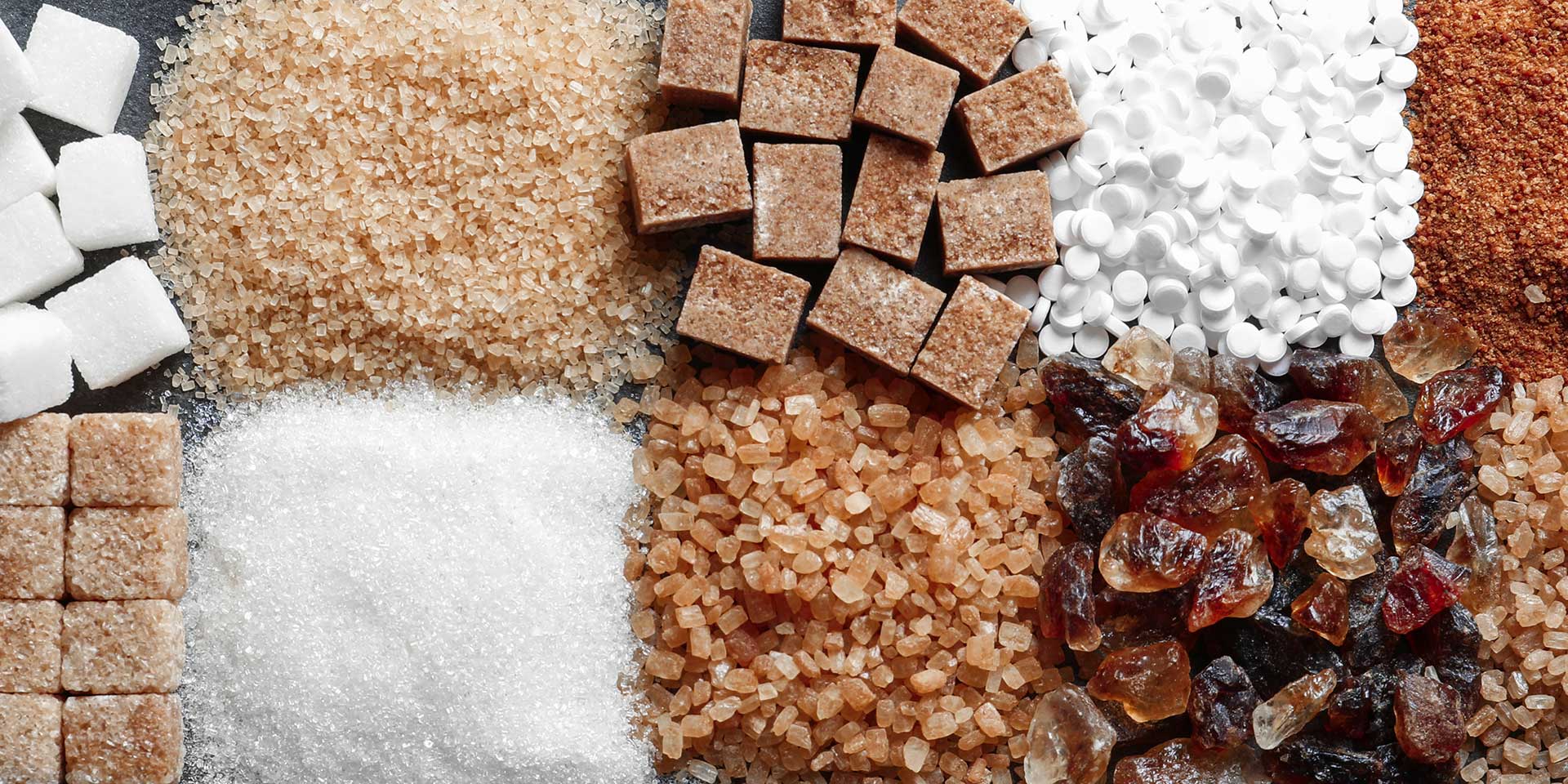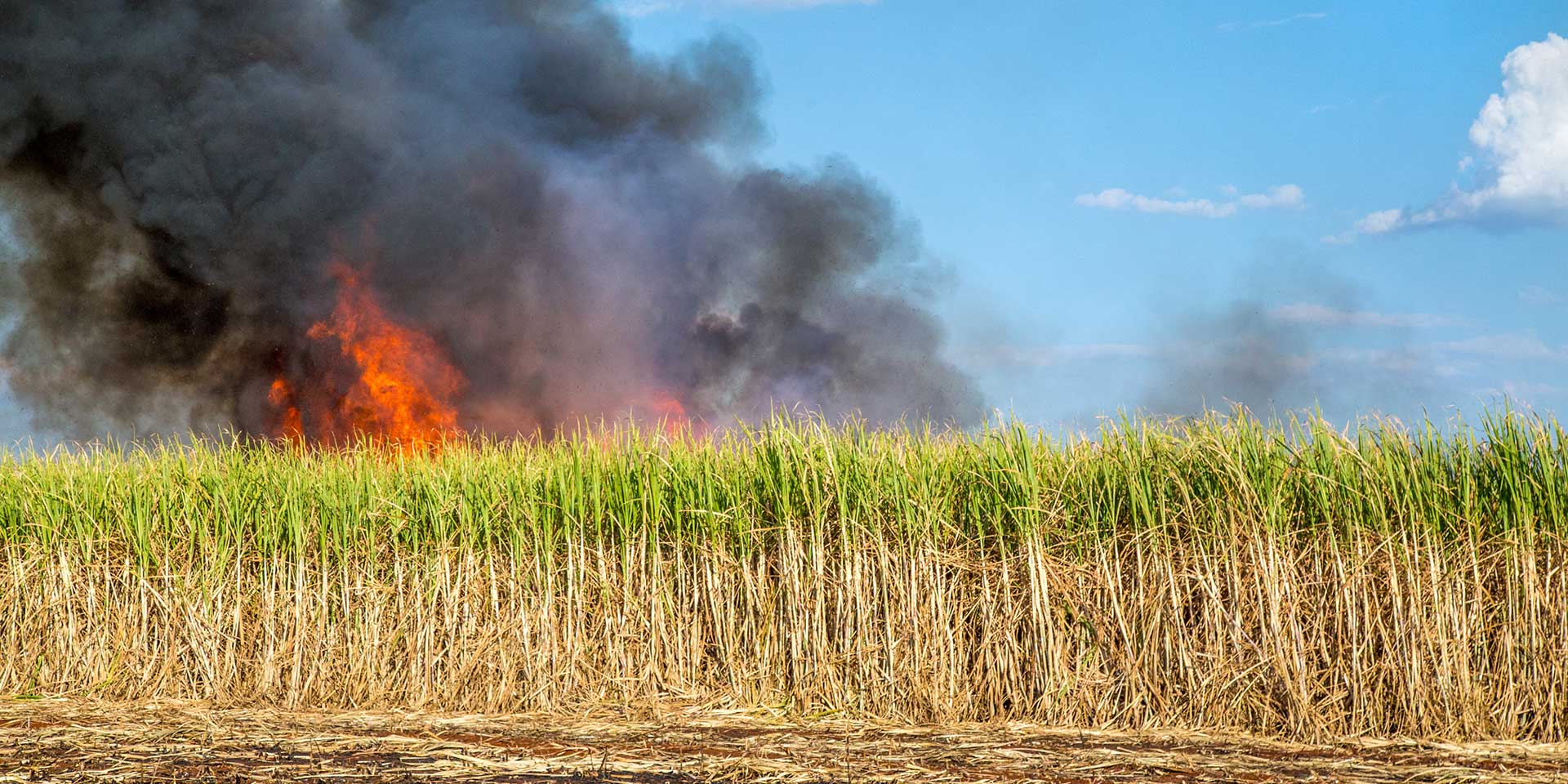Real Food Encyclopedia | Sugar
Sugar is so common — on every diner table, available freely in packets at every coffee shop and service station — that it is hard to think of it as a luxury item. But there was a time when sugar was more expensive than gold. These days sugar is both beloved and reviled, lately coming under scrutiny as a product that causes addiction and that might be a public health concern.
Unfortunately, the tale of sugar in the New World is also that of the slave trade. The labor-intensive cultivation, harvesting and processing of sugar and sugar-based products, most notably rum, relied nearly entirely on the abundance of enslaved labor — laborers who could not reject the often deadly living and working conditions of the sugar plantations.
Sugarcane (Saccharum officinarum) growers remain under constant scrutiny for their poor treatment of workers (which some have likened to a form of modern-day slavery) and the sustainability of their growing and producing practices. Cane sugar is not the only kind of sugar, of course.
Beet sugar, which is derived from white beets but looks and tastes exactly like cane sugar, was discovered in the mid-1700s. Although sugar beet processing did not get underway in the states until 1870, it has been quick to catch up to that of domestic cane sugar production. Since the 1990s, both types of sugar were grown in the United States in equal proportion. Beet sugar, which is less expensive to grow and produce and is not limited to warm climates, even began to gain advantage over cane sugar, particularly in commercial production. However, consumer demand for non-GMO products have dampened the future of this predominantly genetically engineered crop.
Did you know?
- According to the World Wildlife Fund, “A dozen countries around the world devote 25 percent or more of all their agricultural land to the production of sugarcane.”
What to look for when buying sugar
Most often, sugar is presented in its white, granulated form. You can also find brown sugar, which has been sprayed with the molasses that was removed during processing. Raw sugar leaves some of that molasses intact. Powdered sugar is a mixture of white granulated sugar that has been crushed into a fine powder and corn starch added to prevent clumping.
It’s impossible to tell cane from beet sugar by look or taste, but you can learn more about your sugar by reading its package. It will tell you the source of your sweetener, as well as these important indicators:
- Fair Trade: Buy Fair Trade certified sugar. The certification (there are a few different certifiers) indicates that workers are treated fairly and more sustainable environmental practices are being put in place in the growing and production of the sugar cane.
- Organic: Buying sugar that is certified organic guarantees that you will not be consuming GMOs (right now that means it comes from sugarcane, not sugar beets), and that the crop has not been grown or processed with toxic applications.
- Bonsucro: Bonsucro is an international organization that is developing an internationally recognized protocol that improves sustainability of sugar cane production across all sectors of the industry, but they work directly with large companies, so it’s not a label you can find on a product.
Sustainability of sugar
Cultivation
Sugar cane is a tropical, perennial grass. It thrives in hot, humid conditions where it grows from six to twenty feet tall. A central stalk is surrounded by long, fibrous leaves which must be removed before processing (see more on this, below). The canes can be harvested by hand or mechanically. After harvest, the canes will regrow with each successive crop diminishing in yield until the field needs to be replanted. The U.S. produces a fraction of the world’s sugar cane. We grow the majority of our cane in Florida and Louisiana and a sliver in Hawaii and Texas. Globally, Brazil is the leading producer of sugar cane, followed by India.
Sugar beets are related to table beets and Swiss chard, all of which enjoy a cool, temperate climate. Warm days and cool nights are the ideal conditions for sugar beets, which are grown all over the world. The largest producer is Russia, followed by France and then the United States.
Their slow growth rate makes sugar beets particularly susceptible to weed invasion, which robs the root vegetables of necessary nutrients. Weed abatement methods range from hand weeding to intense applications of toxic herbicides, a choice which largely determines the environmental impact of the crop.
GMOs
The sugar beet crop is almost entirely GM (genetically modified). Called “Roundup Ready,” GM sugar beets can be doused with copious amounts of the weed killer glyphosate (aka Roundup), an herbicide that has been called out as a possible carcinogen, without being affected. Glyphosate leaches into ground water and area tributaries through run-off and has also been implicated in the proliferation of super weeds, which require increasing doses of herbicides to adequately suppress them. GMO sugar beets also threaten to cross-pollinate with neighboring crops of chard and table beets.
Environmental impact
- Water use/Pollution: Sugar cane is a slow grower, often taking about a year to reach maturity, and must be watered consistently during this period, making it one of the world’s thirstiest. Runoff from sugar beet production is also a contributor to toxic algal blooms.
- Habitat loss: While sugar cane fields are notoriously popular territory for snakes, they rob native animals, such as birds, of their natural habitat.
- Biodiversity: Sugar cane fields are monocultures that stay in production for years with no crop rotation or underplanting.
- Pollution: Often, the fields are burned to singe the leaves off of the stalks. While the practice makes harvesting more efficient and clears the area of the venomous snakes that often inhabit the fields and threaten harvesters, the practice contaminates the air with ash and particulates and releases a cloud of carbon emissions.
- Soil erosion: The process of clearing the land for new plantings and flooding the crops for irrigation creates a cycle that washes away precious topsoil.
Seasonality
Sugar cane is planted at varying times, indicated by the local environment. In some areas, this is year-round.
Sugar beets are planted in the summer and harvested in the fall in Northern states such as Wyoming, Montana and North Dakota, in the higher elevations of Colorado and in coastal California. In warmer areas, such as the Imperial Valley of California, they are planted in the fall and harvested in the spring before temperatures climb.
Labor Issues
The intense conditions of the hot, tropical sugar cane fields and the isolation of their locations often lead to poor conditions for the migrant workers who cut the cane. Sub-standard living conditions, minimal wages and the absence of health and safety violations are common in the industry.
Eating Sugar
Storing
Kept in a cool, dark place, sugar will keep indefinitely.
Cooking
Sugar brings gloss and sheen to jams, jellies and other sweet spreads. It gives structural integrity to foods such as whipped cream and whipped egg whites and helps jams set to a firm texture. Sugar preserves food as it inhibits bacterial growth. Sugar caramelizes when heated, encouraging browning.
Nutrition
Sugar is also known as sucrose. One ounce, equal to two tablespoons of sugar, has 108 calories, 28 grams of carbohydrate, zero grams of fat or protein and negligible amounts of nutritional vitamins or minerals.
Excess sugar in the diet can lead to diabetes, obesity, heart problems and other issues. Many in the health industry suggest that eaters limit consumption.
Shaving even small amounts of sugar from your diet can lessen health impacts and free up the natural resources used by this environmentally intensive crop.
You might also enjoy alternative sweeteners. Sugar alternatives such as agave syrup, date sugar, honey, maple syrup, palm sugar and stevia can often be swapped in for all or part of the sugar called for in your recipe.


